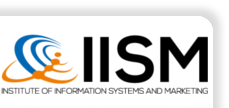Problem Description
Eye-tracking devices collect eye movement data (fixation, saccade, gaze position, etc.) and are used for different purposes in information systems research and practice. Researchers found that the users’ visual attention and eye movements tightly interplay and represent an indicator of the users’ cognitive processes. Eye-movement data can be used for different purposes such as usability tests, eye-based interaction and designing attention-aware systems.
Early eye-tracking devices were expensive and invasive, e.g. requiring users to wear special contact lenses, and therefore hard to use in research and practice. Today, with the further improvement of the technology, there are accurate eye-trackers available in the market with affordable costs. Price range for these devices varies from 100 to 5.000 Euro. Recently, effort has been undertaken for providing eye-trackers at a very low-price using webcams. Utilizing a device's built-in standard webcam as eye-tracker would allow for large, low-cost and possibly remote studies. Thus, exploring the performance of open source webcam-based eye-trackers in comparison to existing eye-tracking technology can bring valuable insights for researchers in Information Systems area.
Goal of Thesis
Comparing the performance of advanced eye tracker (SMI) and low-cost eye-trackers (Tobii 4C) with some webcam-based Eye-tracker (e.g. xLab, Gaze Pointer, ITU, OpenEyes,etc.) and in an empirical study:
Investigate the current state of the art in eye-tracking technology
Design and develop experimental prototype for performance comparison
Skills required
- Strong analytical skills
- Very good time management, organizational and communication skills
- Interested in eye tracking technologies and eye-movement analysis
- Basic Programming skills
- Development skills
- Good English skills


